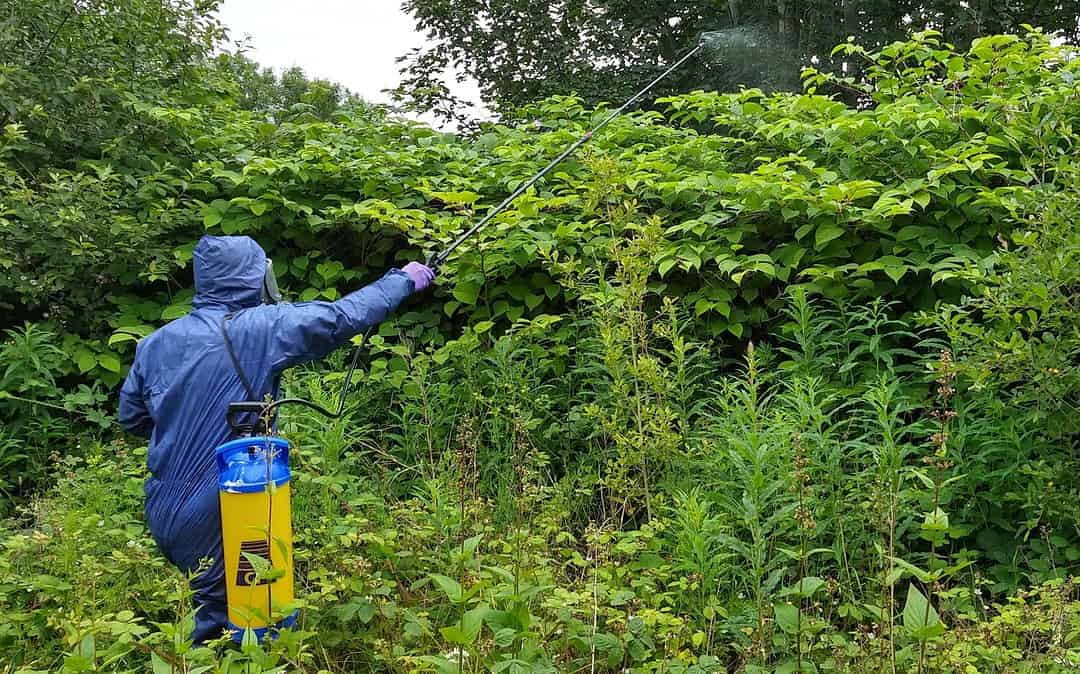knotweed is a highly invasive plant species that is spreading across the UK in 2024
And potentially causing significant damage to buildings and structures.
Learn about its identification, consequences, and steps to take to protect your property from this persistent and damaging plant with this comprehensive guide.
Japanese knotweed can cause significant damage to buildings, structures, and infrastructure. This fast-growing plant can grow up to 3 meters tall and produce over 20,000 seeds per square meter each year. The seeds are infertile and are not usually capable of being cross-pollinated. Most of the population of Japanese knotweed plants are predominantly female plants.
Mainly native to Japan, the plant was brought to the UK in the 19th century as a decorative plant. However, it soon spread beyond gardens and into the wild. It was spread by burrowing animals, Fly tipping, railways & waterways. It rapidly took over large areas of land. The plant’s bamboo-like stems, large green leaves, and small white or cream flowers make it easy to identify.
Japanese knotweed is notorious for causing damage to buildings and structures. Its roots can grow through cracks and crevices in concrete and masonry, causing significant damage to foundations and walls. The plant is also toxic to other plants, making it difficult to grow anything else in its vicinity.
To protect your property from Japanese knotweed, it’s important to identify the plant and seek professional advice from a specialist company. A specialist company will be able to carry out a survey and provide a management plan. Which may involve containment, isolation, and removal of the plant, as well as remediation work to repair any damage.
It’s also crucial to inform your mortgage lender about the presence of Japanese knotweed
as it can impact the value of your property and make it difficult to secure a mortgage. Some mortgage lenders may require a specialist survey and management plan to be in place before they will lend on a property affected by the plant.
Managing Japanese knotweed can be costly, but it’s important to engage a professional specialist company to carry out the treatment program. DIY methods are unlikely to be effective and may even spread the plant further. In some cases, it may be possible to sell a property with Japanese knotweed. The plant must be managed effectively and the buyer must be informed about its presence.
It’s also important to be aware of the legal requirements when dealing with Japanese knotweed. The Environmental Protection Act 1990 requires the seller to disclose the presence of the plant. Failure to inform the seller can result in legal action.
In conclusion, Japanese knotweed is a persistent and damaging plant that poses a significant threat to properties across the UK. Understanding the plant, and seeking professional advice. Are key to managing the infestation effectively. This will help protect your property from the damaging effects of this invasive species.
